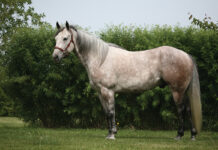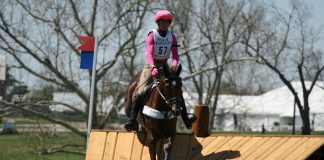Read on for tips on training and correcting a horse that’s rushing the jumps.
As with any training issue, it’s important to rule out any medical explanations. These horses should be looked over by a veterinarian and perhaps other specialists, like a dentist or chiropractor.
With pain/discomfort off the table, rushing is almost always rooted in anxiety. Your horse may find jumping stressful for any number of reasons. He may feel overfaced by the size of the jump, by the speed at which he’s approaching the jump, or by the complexity of the course. He may also have experienced a lot of missed distances or a rider who was unbalanced and accidentally punishing his jumping effort.
Keep it Positive
In order to reverse the effects of these negative emotions and experiences, from this moment on, your horse must have a consistent positive association with jumping. This will most certainly take time, and you as the rider should expect to be patient and allow the process to take as long as it takes.
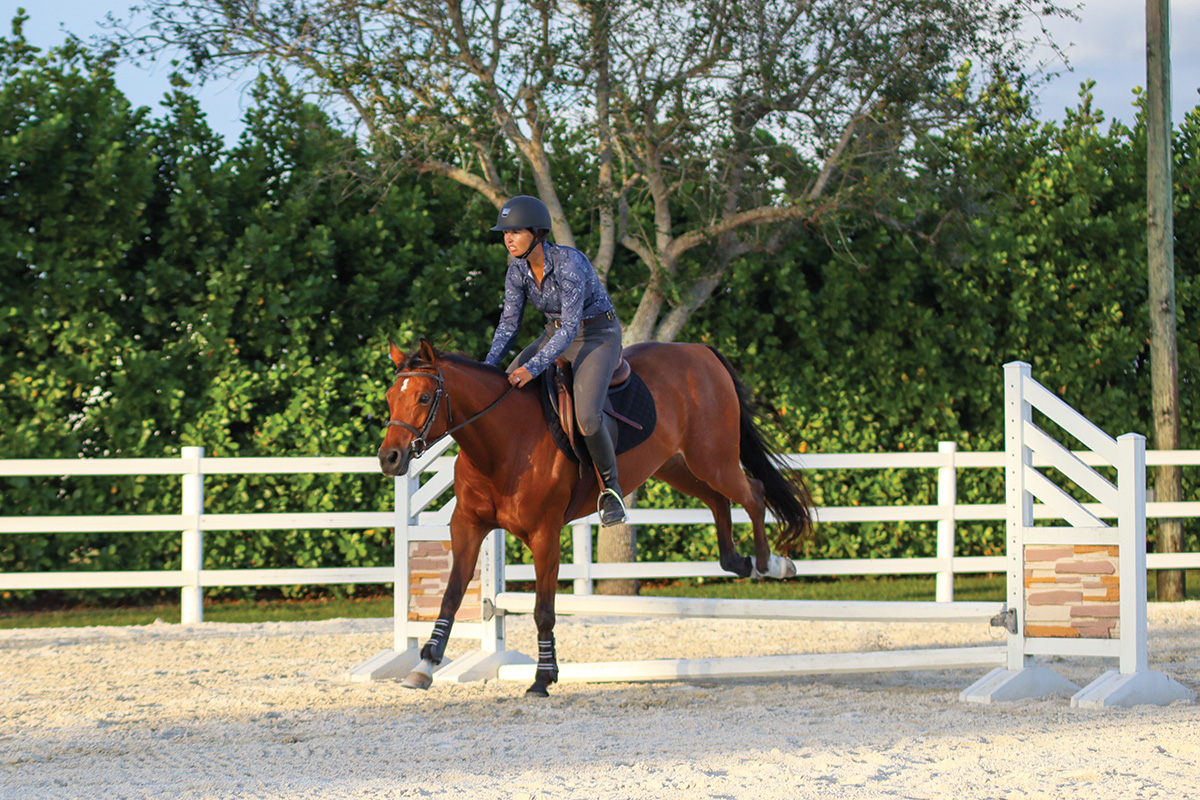
While usually I prefer that horses only jump twice a week, many horses that rush do better jumping five to seven jumps or so every day so that it feels less like a special event to them and more like a standard routine.
The jumps should be low. Even if your horse has plenty of scope, he should be presented with only small jumps until his anxiety subsides. (I consider small jumps to be cross-rails through 2’3″). It’s OK if your horse just needs to go back to ground poles or even trotting and cantering through empty standards.
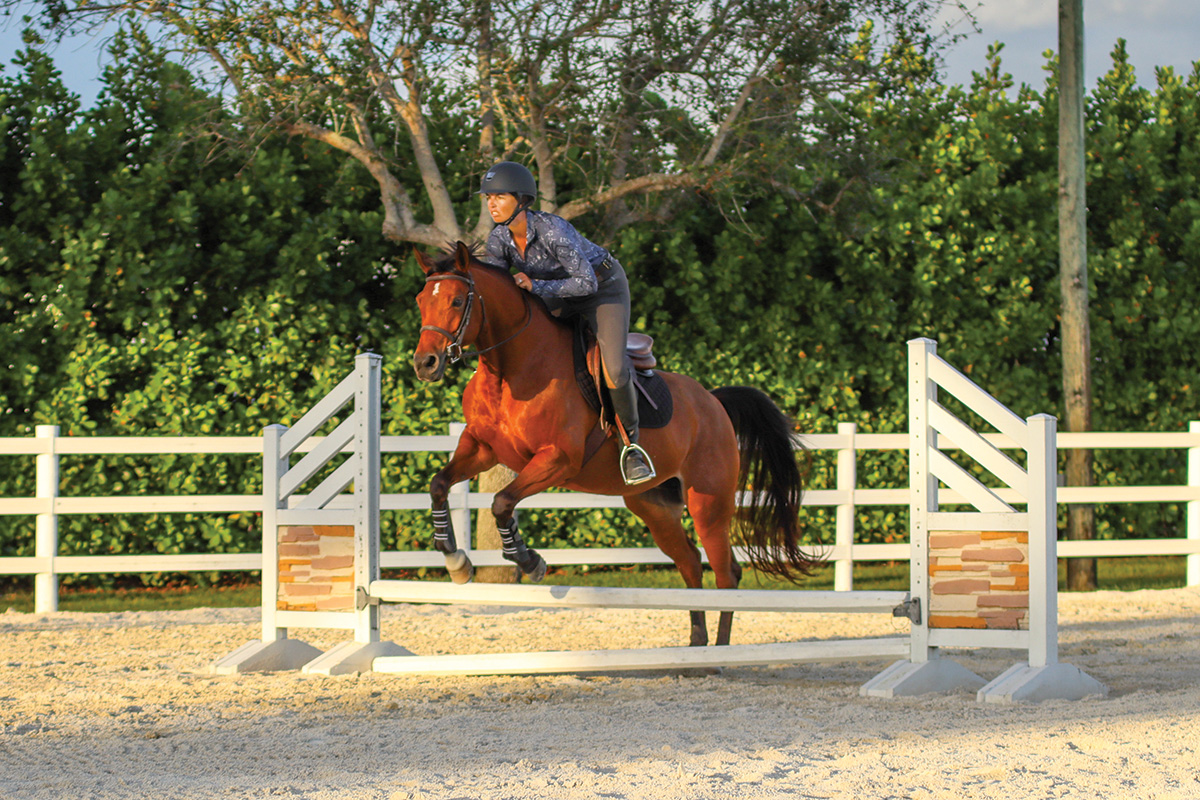
There should not be any right or wrong in these exercises. That extends to leads/lead changes, breaking of gait, or any of the details that normally would be important when jumping. Your horse is feeling enough pressure from the jump alone, so it’s better not to add any pressure through other expectations. (Many young or green horses are most concerned about the lead change that they know is coming after the jump.)
Gradual Introductions to Start
Begin by walking over ground poles or tiny cross-rails. The slow speed gives your horse plenty of time to assess and negotiate the obstacle. Tiny is preferred so that he has less chance of hitting it and scaring himself.
After he has walked over regular rails, add towels, flowerboxes, or other small fillers to continue to build confidence. Once all is going well, you can move up to a slow trot. If trotting leads to rushing, go back to the walk.
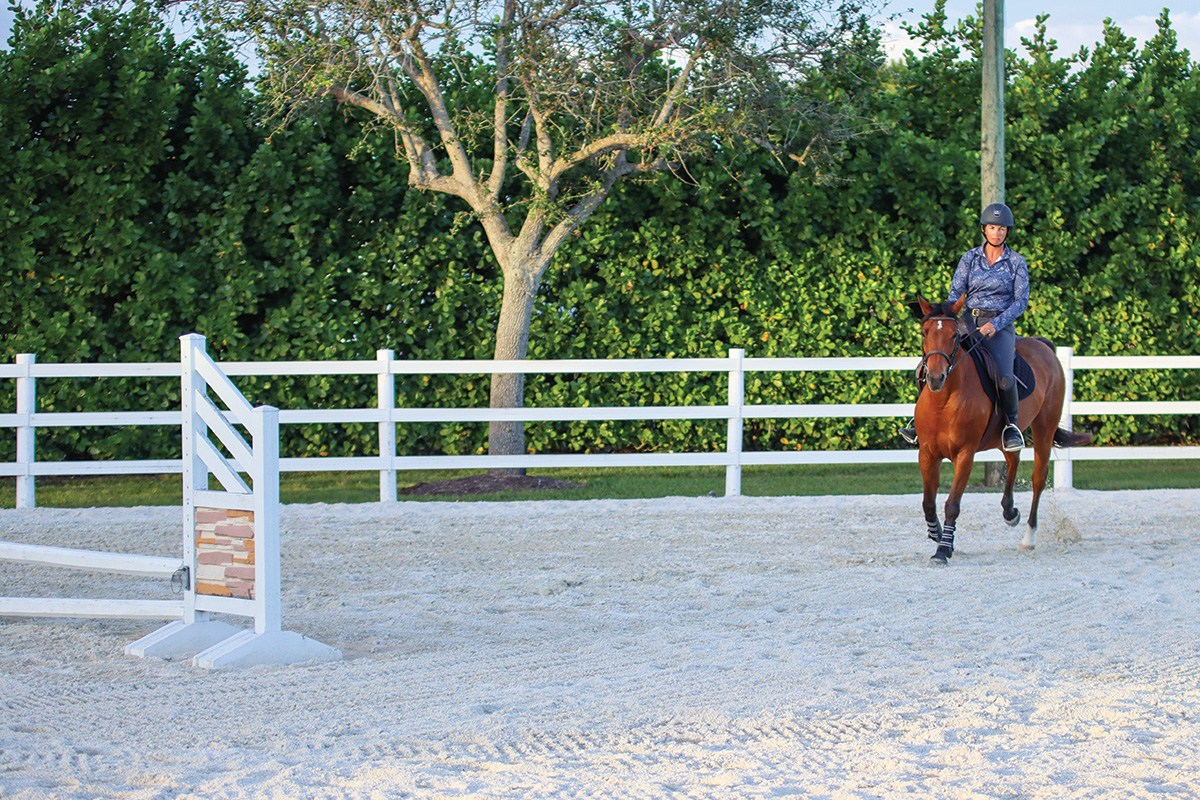
After your horse has mastered relaxed trot jumps from a slow trot, you can test the waters by adding speed with a regular trot or the canter. However, when adding speed, it’s important to also capture the horse’s attention with something other than the jump itself. Give him a job unrelated to the jump that happens to occur near the approach or landing side of the jump. Some examples include circles, figure-8s, and transitions.
The key is to not make this feel like a punishment. Whatever you are asking your horse to do, you should ask about five strides before or after the jump so that there’s space for him to breathe and relax as he approaches the jump, jumps, and lands.
Exercises to Try for a Horse That’s Rushing Jumps
Two of my favorites are a downward transition five to six strides in front of the jump and a figure-8 after the jump, either in trot or in canter, with a simple change.
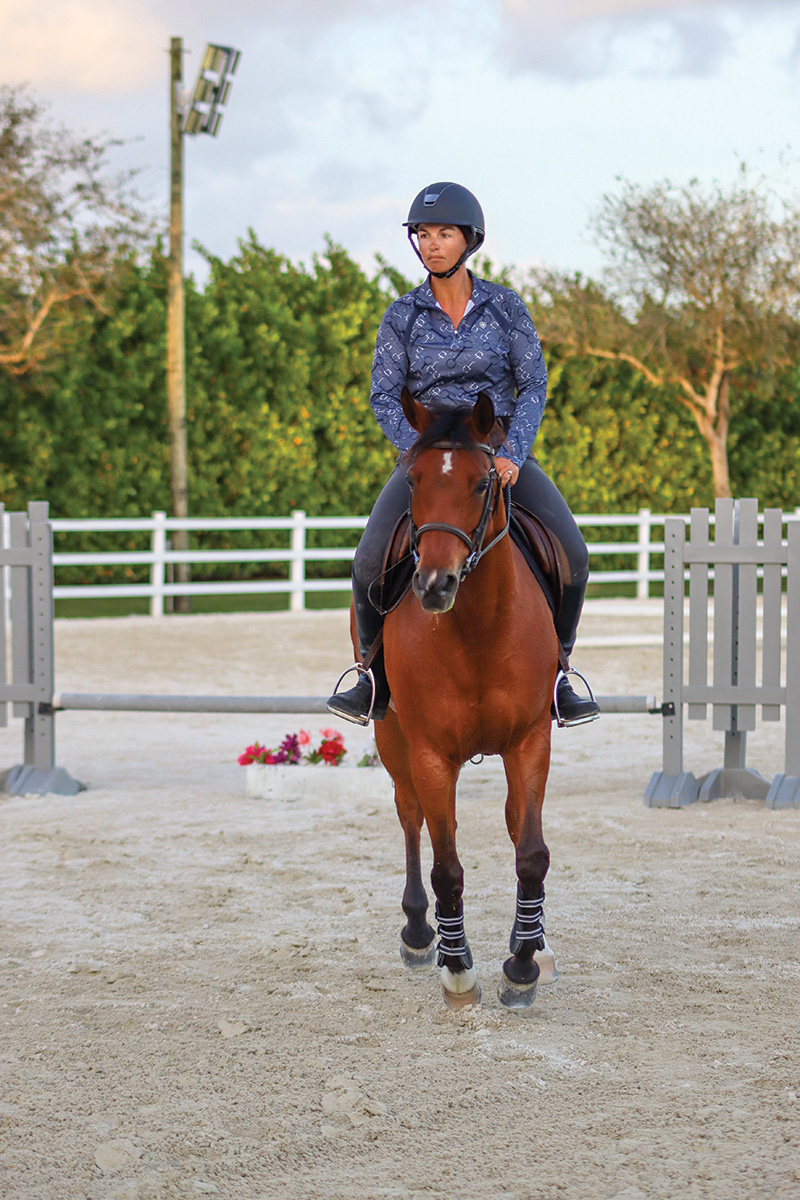
From here, you can string a course together with lots of circles or transitions interspersed between the jumps. The more turns the better, since long, straight lines are not the best idea yet. It’s hard to influence your horse to rebalance on a straightaway without using a lot of hand, which is counterproductive to relaxation.
Once you have made it to the point where your horse is ready to canter some jumps, a good option is to canter a jump on a circle and allow your horse to fall into a rhythm. By creating the same track to the jump and facilitating the same striding over and over, you allow your horse to relax into a predictable pace and not worry about his takeoff distance.
After your horse has built a confident foundation in these exercises, you can begin to ride regular courses again. Just keep the concept of relaxation at the forefront so you can continue to help your equine partner let go of his anxiety surrounding jumping.
This article about training a horse that’s rushing jumps appeared in the July 2023 issue of Horse Illustrated magazine. Click here to subscribe!


